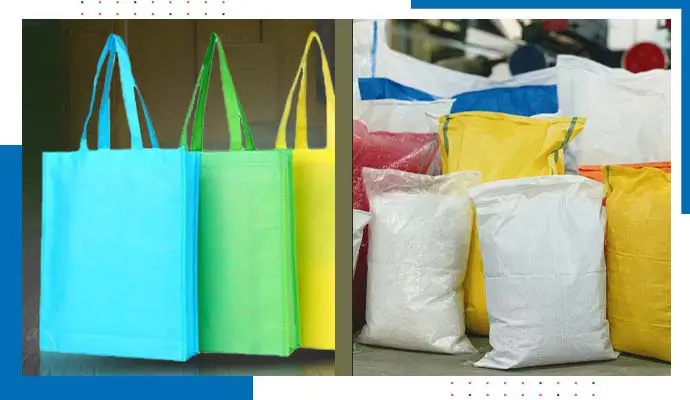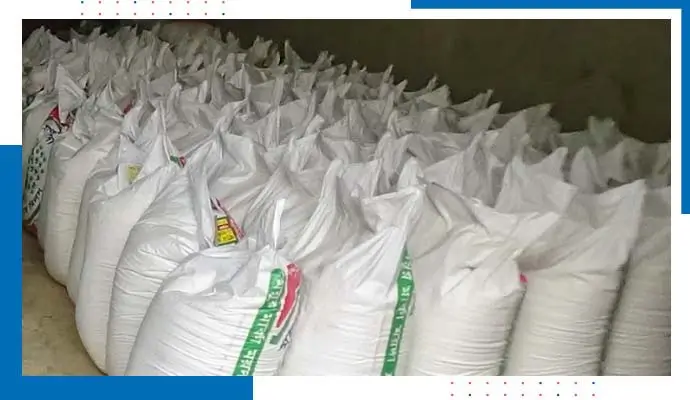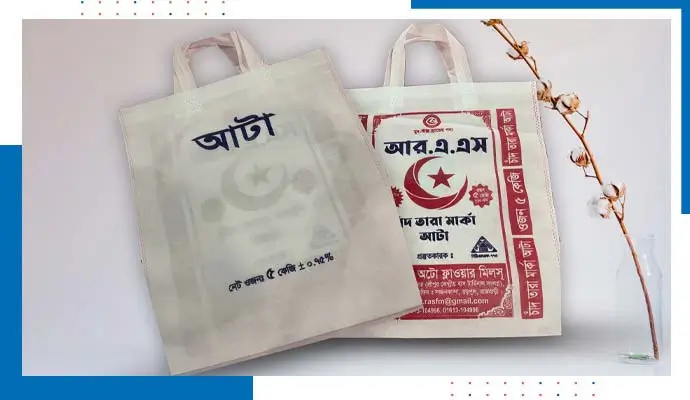Difference between Woven and Non-woven Fabric
Fabric is a fundamental element in the context of textile industries in Bangladesh. It plays an important role in various industries, from fashion and home décor to medical and industrial applications. The two primary categories of fabric are woven and non-woven. Each has its unique characteristics, production methods, and uses. In this blog post, we will discuss the difference between woven and non-woven fabrics in detail, covering their production processes, properties, advantages, and applications.

Woven Fabrics
Woven fabrics are created through the interlacing of two sets of yarns at right angles to each other. This process often requires a loom; with the warp or the vertical yarn present and the weft or the horizontal yarn passing over and under the warp. The weave pattern can also differ, meaning that this will produce variations in the texture as well as the level of strength.

Key weaving techniques
Woven fabrics are created through various weaving techniques. Understanding these key weaving techniques is crucial for selecting the right fabric for specific applications. Here are some of the primary weaving techniques:
- Plain Weave: It is the simplest and most common weave. Each weft thread passes over and under each warp thread alternately.
- Twill Weave: The twill weave is characterized by a diagonal rib pattern created by the weft thread passing over one or more warp threads. The pattern shifts in each row, forming diagonal lines.
- Satin Weave: It creates a smooth, shiny surface by allowing the warp or weft threads to float over several threads before interlacing.
Main characteristics
Woven fabrics have several characteristics that make them suitable for a wide range of applications. These characteristics are determined by the weaving technique. Here are the main characteristics of woven fabrics:
- Durability: Woven fabrics are generally strong and durable due to the interlacing of threads.
- Variety: Available in numerous patterns, textures, and finishes.
- Structure: Has a defined structure, making it less stretchy but more stable.
- Raveling: Prone to raveling at the edges, requiring seam finishing.
Advantages
Woven fabrics offer numerous advantages due to their unique structure and the versatility of the weaving process. Here are the primary advantages of woven fabrics:
- Strength: The interwoven structure provides excellent tensile strength and durability.
- Customizability: Different weaving patterns and yarn types offer a wide range of textures and properties.
- Versatility: Suitable for various applications, including apparel, home textiles, and industrial uses.
Common uses of Woven Fabrics
Woven fabrics are versatile and widely used in various applications due to their strength, durability, and variety of textures and patterns. Here are some common uses of woven fabrics:
- Clothing: Shirts, pants, dresses, jackets, and jeans.
- Home textiles: Bed linens, curtains, upholstery, and towels.
- Industrial applications: Composite materials, filtration membranes, automotive insulation, and safety harnesses.
- Medical textiles: Bandages, surgical gowns, and drapes.
Non-woven Fabrics
Non-woven fabrics are made directly from fibers, bypassing the yarn-making process. These fibers are bonded together through chemical, mechanical, heat, or solvent processes, resulting in a fabric that lacks the interlaced structure of woven textiles.

Characteristics of Non-woven Fabrics
Non-woven fabrics are a unique category of textiles in Bangladesh. This category of fabrics has distinct characteristics that make them suitable for a variety of applications. Here are the main characteristics of non-woven fabrics:
- Flexibility: More flexible and stretchable compared to woven fabrics.
- Cost-Effectiveness: Generally cheaper and faster to produce.
- Versatility: Can be engineered to have various properties, such as absorbency, liquid repellency, and flame retardancy.
- Disposable: Often used for single-use products due to the lower production cost.
Common uses
Non-woven fabrics have become indispensable in many industries because of use of their unique properties and versatility. They are widely used in both disposable and durable applications. Here are some common uses of non-woven fabrics:
- Medical Products: Disposable face masks, gowns, drapes, and surgical caps.
- Hygiene Products: Diapers, sanitary napkins, wipes, and tampons.
- Industrial Applications: Geotextiles for erosion control, insulation materials, filtration systems, and automotive interiors.
- Consumer Goods: Disposable food packaging, shopping bags, and cleaning wipes.
Key differences between woven and non-woven fabric
The choice between woven and non-woven fabrics depends on the specific requirements. Here are the key differences between woven and non-woven fabrics, encompassing their manufacturing processes, properties, and typical uses:
- Woven: Made by interlacing yarns in a structured manner.
- Non-Woven: Made by bonding fibers directly without weaving.
- Woven: Generally stronger and more durable due to the interwoven structure.
- Non-Woven: Can be strong but usually less durable than woven fabrics.
- Woven: Typically more expensive due to the complex production process.
- Non-Woven: Generally cheaper and quicker to produce.
- Woven: Preferred for durable and long-lasting products.
- Non-Woven: Ideal for disposable and single-use items, as well as specialized industrial applications.
- Woven: Less flexible and does not spring back into shape easily.
- Non-Woven: More flexible and can retain shape better after bending or stretching.
- Woven: Requires specific care based on the type of fiber and weave; generally more robust in washing and ironing.
- Non-Woven: This should be handled carefully during washing and ironing to avoid damage.
Final remark
Both woven and non-woven fabrics have unique advantages and are suited to different applications. Woven fabrics are ideal for products that require durability, strength, and a variety of textures and patterns. Non-woven fabrics, on the other hand, are perfect for applications that benefit from quick production, cost-effectiveness, and specific engineered properties.
Whether you're designing clothing, medical supplies, industrial products, or everyday consumer goods, understanding the differences between woven and non-woven fabrics can help you choose the best material for your needs. N. Biswas Group provides the best quality woven and non-woven bags to their clients. If you want quality woven and non-woven fabrics, contact N. Biswas Group.
Order Now!